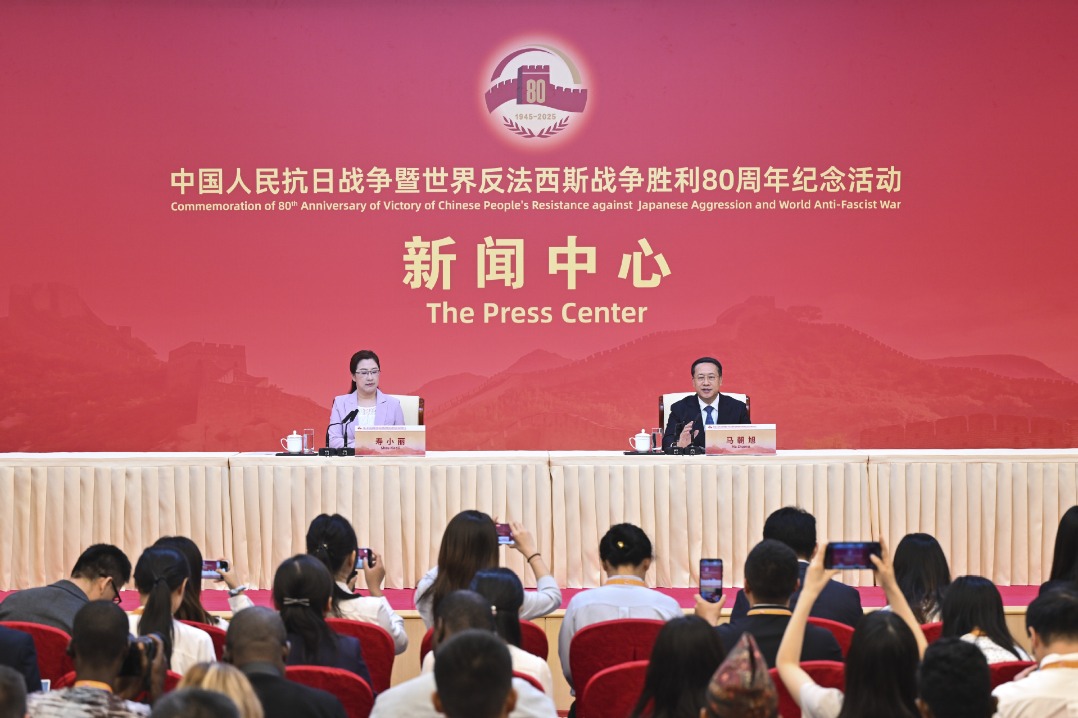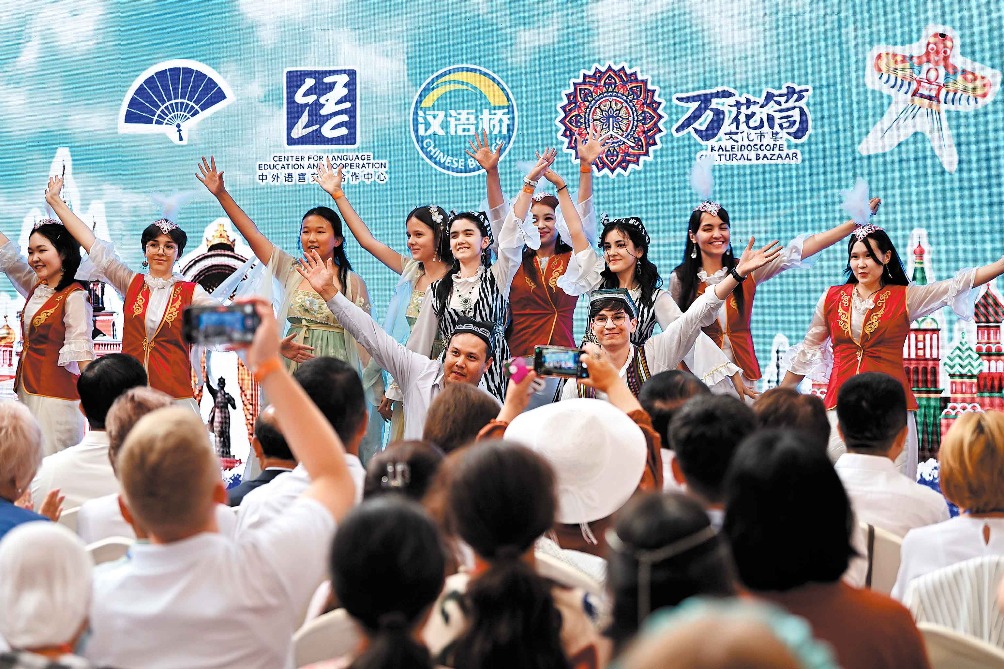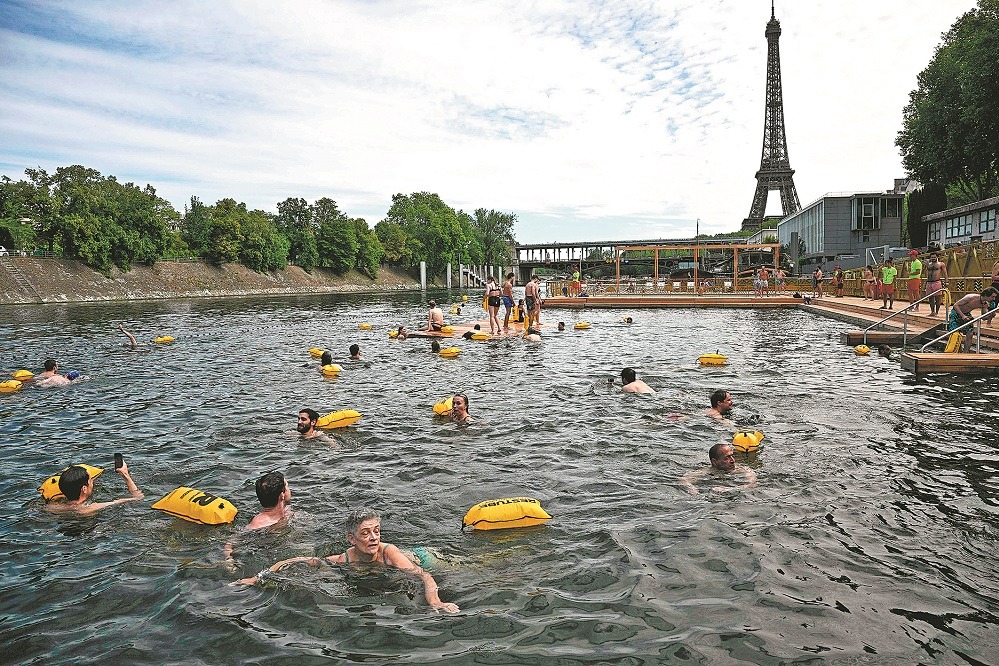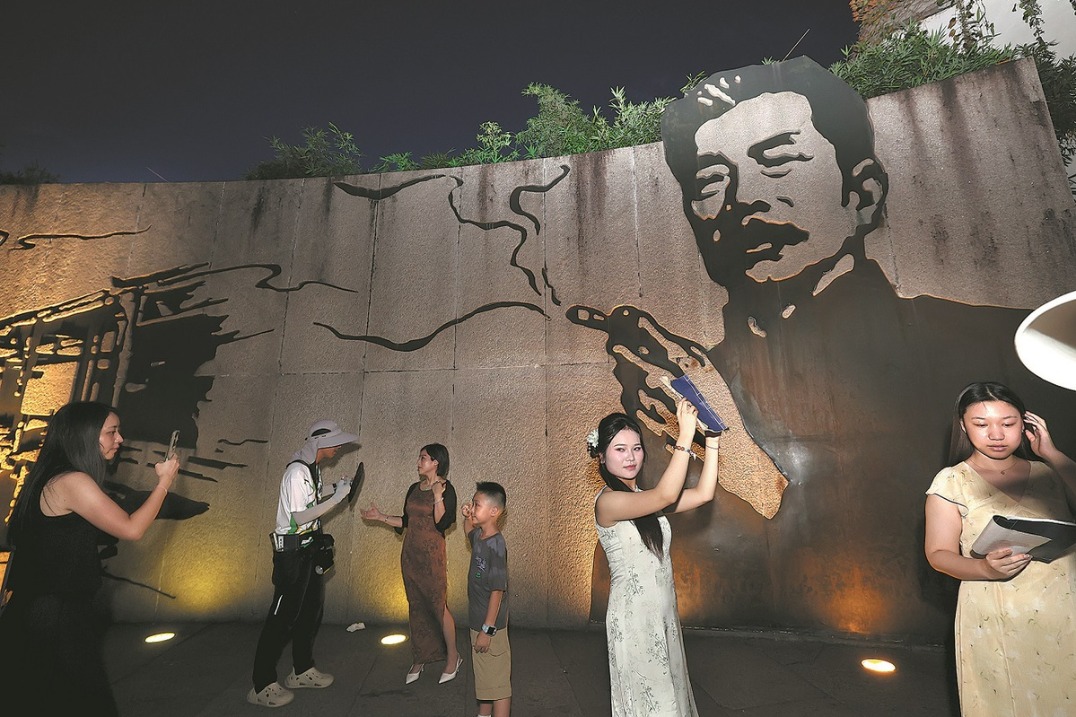Canal chronicles
From restoring an ancient Confucius temple to building a cultural entertainment block, the northern stretch of the Grand Canal in Beijing is undergoing a major makeover to draw visitors, Yang Feiyue reports.

Editor's note: China is home to 56 UNESCO World Heritage sites. To find out how these natural and cultural gems still shine and continue to inspire the nation in this new era of development, China Daily is running a series of reports covering 10 groups of selected sites from across the country. In this installment, experience the flow of progress as we welcome you on cruise along the 2,500-year-old Grand Canal.
Pruned trees and manicured lawns line the banks as far as the eyes can see. Towering buildings bask in the sun, their glowing reflection lending the placid waters a golden hue. Freshly painted boats dot the wharfs like some delightful crimson bloom. A journey along Beijing's picturesque stretch of the historic Grand Canal indeed promises to be a memorable one.
The world's longest artificial waterway, which is 2,500 years old and a UNESCO World Heritage Site, runs from China's capital city in the north to Hangzhou, Zhejiang province, in the south.
A comprehensive beautification and conservation project of the canal's northern section, mainly flowing through Beijing's Tongzhou district, Xianghe county in Hebei province and Wuqing district in Tianjin, began in late 2018.
Wharf 2 in Tongzhou is where the scenic cruise begins. Liu Zhenfeng, deputy director of the district's water resources bureau, says that three sightseeing routes have been designed for those keen to explore its natural, as well as urban, wonders.
The river basin in Tongzhou has been widened and greenways have been built on the levees. Silt has been dredged out and used to landscape the banks. Locks have been installed on one side of the canal, which allows eight vessels to pass in both directions at the same time.
Since June last year, residents of the capital city have been able to fully enjoy a 40-kilometer stretch of the vast inland waterway, along which their ancestors once ferried grain, agricultural produce and other essential items.
Construction of this key transportation artery, which links several major waterways across the country, including the Yangtze, Huaihe and Yellow rivers, was at its peak under the Sui (581-618) and Yuan (1271-1368) dynasties.
The canal formed the backbone of the empire's inland communication and trading systems, thereby playing a crucial role in ensuring the nation's economic stability. Even today, the canal is a major means of inland communication.
The UNESCO World Heritage Committee recognized the Grand Canal as the longest and oldest of its kind, and listed it as a World Heritage Site in 2014. "It bears witness to a remarkable and early development of hydraulic engineering," the UNESCO website states.
A 62-kilometer boat tour to Langfang, Hebei province, is expected to open to the public soon. Dining options, exclusive exhibitions and creative cultural products will be on offer along the way to enhance the experience further. It is all part of a concerted effort by the Beijing authorities to turn the canal area into a top destination.
A stone's throw from Wharf 2, an ancient architectural cluster-the highlights of which are a Confucius temple and the Randeng Pagoda-has been restored.
The temple's red walls and gray tiles exude an ancient charm. It was originally built during the Yuan Dynasty, but underwent multiple makeovers during the Ming (1368-1644) and Qing (1644-1911) dynasties.
Three white marble bridges across a pond near the temple's main entrance grab the attention of visitors. "Legend has it that these bridges were the only way for men of letters to enter the temple," says Zhou Chaoyue, a guide at the cluster.
Rooms that kept a record of the outstanding talent and achievements of officials line the eastern and western flanks of the bridges. Further in, the Hall of Great Achievement hosts memorial tablets to Confucius and his disciples.
At the back of the cluster, the Randeng Pagoda reveals itself in its full glory. It towers about 60 meters into the sky and features a lotus cushion and delicate carvings on every side.
Restoration challenges
The ancient architectural cluster covers an area of more than 15,000 square meters, and will soon be ready for public viewing. "The location, shape and size of each building is traceable through history," says Hao Hongwei, who is in charge of technical maintenance.
Hao couldn't hide his excitement while speaking about the Shengxun Pavilion on the western side of the Hall of Great Achievement. "It was just gone; its foundation couldn't be found during renovation of the temple," he says.
And then, like a miracle, an old picture of the pavilion-built to show respect toward the saint's wisdom-was found. "The picture, taken between 1912 and 1949, clearly shows the pavilion's position and structure," he adds.
The pavilion had a door to the south and no windows on any side. It was one of the many challenges that Hao and his team had to overcome during the restoration process.
The area around the Confucius temple was occupied by factories and residences in the 1950s, and they undermined the shrine's layout. All unauthorized constructions were cleared at the beginning of the 21st century.
It took Hao's team a week to demarcate the space around whatever was left of the ancient edifice. The protection crew then began recovering foundations of the structures. "We found a network of bomb shelters. These were flagged as immediate hazards because they could let rainwater in," Hao says.
So, beams were erected inside the bomb shelters while work to reinforce the ancient structures continued. Time-tested materials, ranging from lime earth and gray bricks, were used to restore the original framework of the cluster.
Just when construction workers got busy with the Confucius temple, they found something that didn't look right with the Randeng Pagoda. Professional investigation corroborated their suspicions and ascertained a 7-degree tilt to the southeast.
The project to remedy the leaning pagoda started in 2016. Scaffolding was anchored to the ground, 20 centimeters from the tower, to ensure complete stability and zero chance of compromising the ancient architectural wonder, Hao says.
The restoration team first meticulously removed the white coating left by a major overhaul in 1986, and unveiled the delicate details of the clay sculptures on the tower, such as their armor scales and flying ribbons.
The number of wind bells and their positions were all accounted for before being taken off one by one for repair, Hao says.
Collective responsibility
Currently, the ancient cluster is a crowd magnet, as residents click pictures from a distance during their walks along the Grand Canal.
"The Grand Canal doesn't just represent the flow of time, but also the extension of space. It is an artery that has nourished people, and a cultural vein filled with history," says He Yun'ao, director of the cultural museum and archaeology branch of the Grand Canal Cultural Belt Construction Research Institute in Nanjing, Jiangsu province.
In 2017, President Xi Jinping emphasized that protecting the Grand Canal was a collective responsibility. Inspecting ecological environment management along the canal, he asked all stakeholders to tap into the historical and cultural resources of the engineering marvel as a template for future projects.
Beijing seems to have responded with gusto to the president's rallying call, pledging further efforts to protect and restore historical river systems and cultural heritage during the 14th Five-Year Plan (2021-25) period, according to a news conference on the city's management and development in April.
The goal of the local authorities is to comprehensively integrate the cultural and tourism resources along the canal, and to develop diverse experiences, says Wei Yunyun, deputy director of the Tongzhou forestry and parks bureau.

































